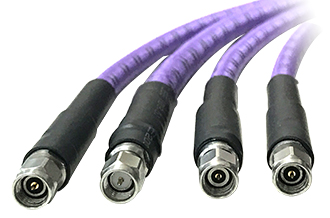Brief introduction: In the field of wireless communication, microwave RF test cable is a commonly used high-precision system test consumable, which is used in conjunction with test instruments. Microwave devices* commonly include Agilent, Anrisu and other vector network analyzers and sweepers. Any DUT is located between the signal generator and the analyzer, and the bridge between the DUT and the instrument is the test accessory or test system. Do not ignore these test accessories. Whenever possible, * can cure these test accessories to make them a standardized measurement system. When the instrument supplier provides the complete machine, * will provide a test cable that matches the high operating frequency of the instrument. In the real test process, you will encounter different situations and need to use different accessories, all of which will affect the accuracy of the measurement results, which requires the tester to have an in-depth understanding of the relevant test accessories.

When selecting the cable specifications in the test system, in addition to considering the insertion loss and VSWR, the stability of the cable must be good. In the RF and microwave frequency bands, commonly used cables are classified into semi-rigid cables, semi-flexible cables and flexible braided cables. Flexible cable as a "test grade" cable. Flexible cables are relatively expensive compared to semi-rigid and semi-flexible cables because flexible cables are designed with more factors in mind. Flexible cables are susceptible to multiple bends and maintain performance, which is a basic requirement for test cables. Soft and good electrical indicators are a pair of contradictions and are the main cause of rising costs. The flexible cable must remain stable in amplitude and phase under bending conditions.
Generally speaking, the cable of a single inner conductor is favorable for the stability of the amplitude; the cable of the multi-strand inner conductor is favorable for the stability of the phase, and it can be seen that only these two indicators are difficult to complete. GORE has succeeded in mastering and applying low-density PFFE (e-PTFE, expanded polytetrafluoroethylene, dielectric constant as low as 1.3) technology for flexible test cable core materials for many years, as well as innovative gapless inner armoring process. The combination of electrical and mechanical performance of the armored test cable achieves a significant increase in the service life of the test cable while retaining the excellent and stable electrical specifications of the GORE cable, while retaining the extremely light weight and Ultra-flexible.
Pay attention to the process of observing the joints of the joints and cables, which will affect the service life of the cables. In this part, there is a hard contact between the traditional cable and the connector, which is easy to cause the cable to break. This is also a headache for most test engineers during the test using the traditional test cable. This is not a simple heat. Shrink tubing can be solved because the breakage of such a hard contact point is often caused by the test cable being bent after frequent bending, and the tension is transmitted through the cable to the hard contact point, causing the hard contact point to age and break. Traditional flexible test cables without armor. Needless to say, the use of reinforced heat shrink tubing at the cable and joint connections does not extend the life of the test cable because there is no armor layer protection; Cables Because of the gap between the armor layers and between the armor layer and the signal transmission layer, the tension is transmitted to the hard contact points after the cable is bent, causing the index to jump after a period of use.
In order to effectively solve the problems encountered in the practical application of the above traditional test cables, GORE has no gap and tight internal design, so that the tension and torque generated by the bending will be distributed to the cable machinery as evenly as possible under the condition of bending. Layering to reduce the impact on hard contacts and signal transmission layers to achieve stable electrical specifications and extended service life.
The material of the joint is also the main factor determining the life of the test cable. In general, the joint with the copper outer conductor has a shorter service life than the stainless steel material. Under the premise of satisfying the moment, the former has a life of 500 times and the latter has 5,000 times. The definition of this indicator is that after the end of life, the factory specifications of the joints begin to decline, rather than saying that the joint is about to be scrapped. Under normal circumstances, the life of cable joints is much larger than the above indicators. For production test environments that require frequent insertion and removal, the application of adapters is recommended.
In simple terms, for relatively static interconnection schemes, it is recommended to select a normal test cable without armor, and for armored cables for mass production testing or heavy laboratory testing, without frequent insertion and removal. From a long-term perspective, it is always a good value for money*. The design of the flexible cable violates the design principle of low passive intermodulation to some extent, so the flexible cable has few low passive intermodulation models.
In general, the flexible test cable must be good and stable. Choose a flexible test cable from practical applications, frequency, loss, VSWR, joint material, service life, RF leakage, passive intermodulation and cost. Consider, rather than simply consider the price, because in the test process, the impact on the overall cost * is often the test efficiency and output yield.
Contact: Mr. Wong(Tech)
Phone: +86-15021372007
Tel: 021-66030982
Email: shhuiyong@163.com
Add: Building A, 260 Yuantai Rd, Baoshan District, Shanghai